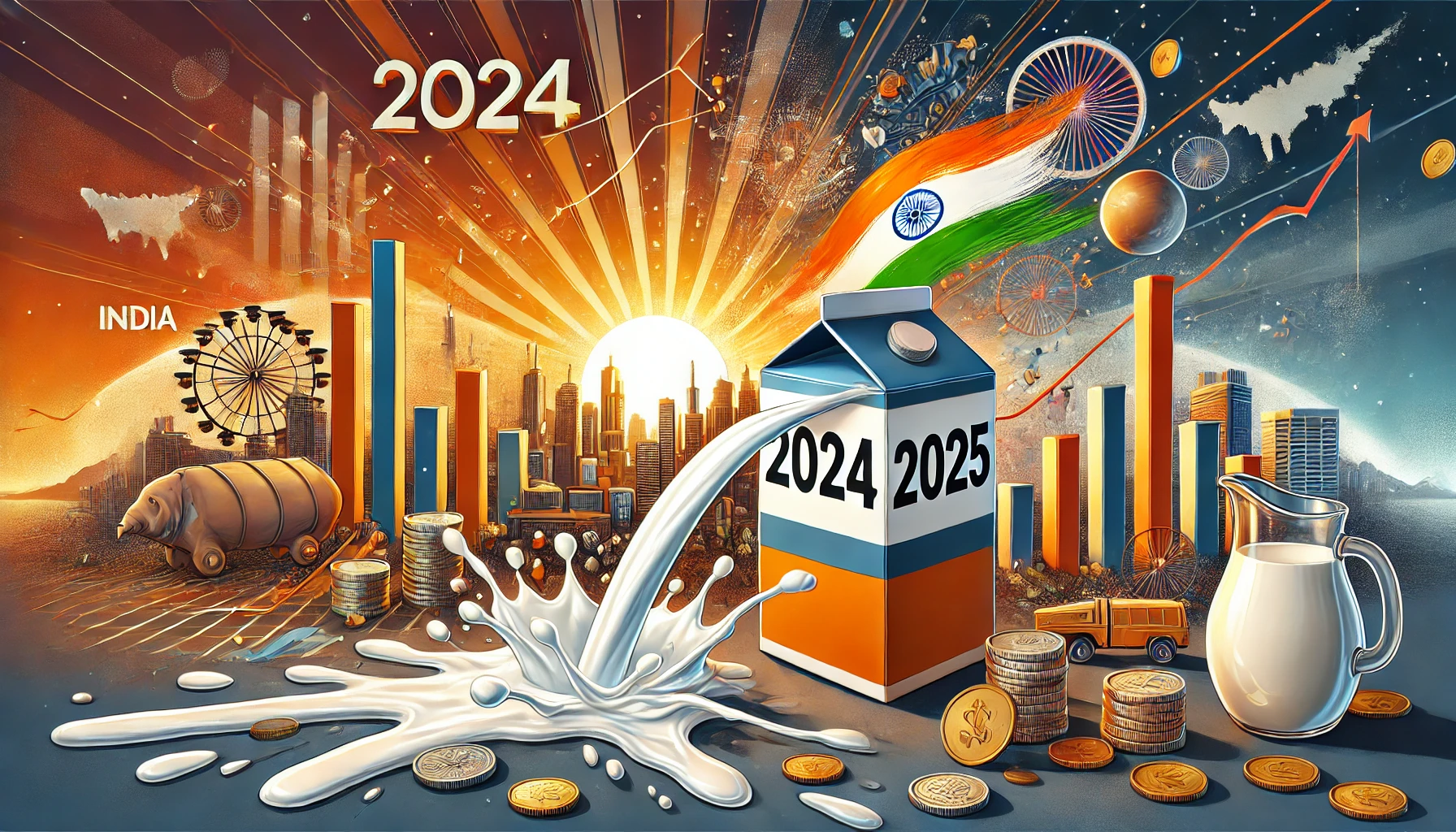As 2024 draws to a close, it feels apt to reflect on India’s economic journey—a story of promise, resilience, and recent turmoil. It’s a tale reminiscent of a carton of milk that has lingered too long in the fridge. Initially, it seemed fine, but as time passed, the sourness became unmistakable.
By the end of 2024, the milk had undeniably curdled. Fast-moving consumer goods (FMCG) companies, once cautiously hinting at faltering demand, began sounding loud alarms. Urban consumption was on the decline, and the middle class—the bedrock of India’s economy—was struggling. Nestlé India’s head even went as far as declaring that the middle class was shrinking. GDP growth in the second quarter of FY25 plummeted to 5.4%, far below the Reserve Bank of India’s (RBI) optimistic projections of 6.5% to 7%.
A Shocking Turn of Events
This downturn was as surprising as a top student suddenly scraping by with pass marks. The slowdown wasn’t confined to one sector. Consumption, investments, exports, and industry all faltered. Even the traditionally robust service sector saw a decline in growth compared to the previous quarter. Economists and policymakers scrambled for answers.
Some explanations emerged:
- Excessive Monsoons: Prolonged rains in August and September disrupted industries like mining, power, and construction.
- The ‘Shraadh’ Period: September’s inauspicious period for Hindus curtailed big-ticket purchases.
- Delayed Government Spending: General elections in early 2024 delayed infrastructure spending, leaving departments racing to meet targets by year-end.
Optimists predicted a rebound during the festive October-December period, buoyed by Diwali, weddings, and year-end celebrations. But was this hope misplaced?
The Indian Consumer: At the Heart of the Mystery
The Indian consumer has long been the economy’s heartbeat, but recent shifts have created new challenges. Post-pandemic, there was a surge in spending driven by a “you only live once” mentality. Fancy vacations, gadgets, and aspirational purchases became the norm, even for those who couldn’t afford them. This spending spree reshaped the economy in three significant ways:
- Speculation Frenzy: People sought easy money through stock markets, futures trading, and even fantasy sports apps. These apps, masquerading as entertainment, often pushed users toward online gambling. What was once clandestine cricket betting now had a digital, publicly accessible avatar.
- Premiumization of Consumption: Companies shifted focus from struggling middle and lower-income groups to affluent consumers. Entry-level cars and two-wheelers saw declining sales, while luxury SUVs and high-end real estate thrived. Even everyday products like detergents and dishwashing pods underwent “premiumization.”
- Credit Boom: Banks and financial institutions, eager to capitalize on consumer appetite, flooded the market with credit. From microfinance loans to zero-cost EMIs, borrowing became easy—and risky. Subprime borrowers, enticed by easy credit, often ended up with multiple loans and high-interest rates.
The Credit Bubble Bursts
This credit-driven consumption couldn’t last forever. The RBI stepped in to tighten regulations, making it costlier for banks to lend to non-bank financial companies (NBFCs). Fintech firms and NBFCs, which had been exploiting loopholes to issue risky loans, faced a regulatory crackdown. Household access to easy credit diminished, retail credit growth slowed, and defaults increased. The dream run of consumption came to an abrupt halt.
Simultaneously, the post-pandemic “pent-up demand” began to fade. Job growth stagnated, and salary increments dwindled. Manufacturing and services, which generate high-quality jobs, failed to regain pre-pandemic momentum. Agriculture’s share of the workforce increased, reflecting a troubling shift towards lower-paying jobs.
Companies Pull Back
As consumers tightened their belts, companies followed suit. Depressed demand-led businesses to scale back investments. Why build new factories when customers can’t afford existing products? This vicious cycle further dampened GDP growth.
The Government’s Role
The government has doubled infrastructure spending compared to pre-pandemic levels while reducing the fiscal deficit from over 9% of GDP during the pandemic to less than 5% in 2024. However, this balancing act has come at a cost:
- Cuts in Revenue Expenditure: Subsidies, public programs, and handouts—directly impacting the average citizen—have been curtailed.
- Increased Tax Burden: GST collections rose by 12%, and income tax revenue increased by 20%. Higher GST rates on “luxury” items like branded garments and high-end accessories further strained affluent consumers who drive the economy.
This tax policy risks alienating segments crucial to economic recovery. Behind every luxury purchase lies a supply chain of artisans, traders, and retailers. Overburdening these consumers could harm the livelihoods dependent on them.
The RBI’s Dilemma
The RBI’s focus on controlling inflation has led it to maintain high interest rates. While core inflation (excluding volatile food prices) has decreased, the Consumer Price Index remains elevated due to food price spikes. This disconnect has prevented the RBI from cutting rates, even as growth slows.
Looking Forward to 2025
As we step into 2025, the road ahead is both challenging and hopeful. India’s medium-term growth prospects remain promising. A young population, a stable political system, and increasing foreign investment in manufacturing offer reasons for optimism. However, immediate intervention is necessary to navigate the current slowdown: high interest rates, elevated taxes, and restrained public spending risk deepening the slump.
Policymakers must strike a delicate balance between encouraging consumption and maintaining fiscal discipline. If they succeed, 2025 could be the year India’s growth story finds its stride again. As the year closes, let’s hope the sourness of 2024 transforms into the sweetness of economic recovery. Here’s to a brighter, more prosperous 2025.


